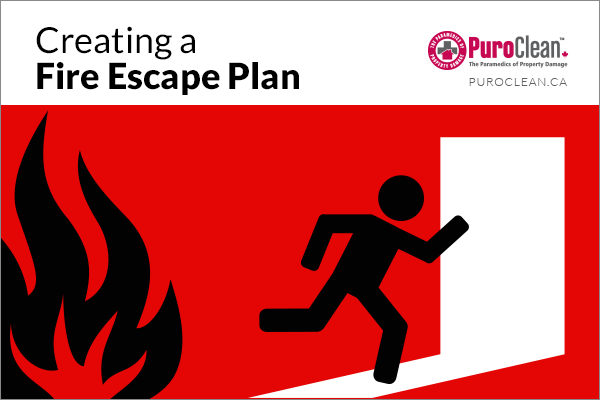The PuroClean Blog
Creating a Fire Escape Plan


It is strongly advised to read the following points and plan a fire escape in advance:
- The street number of the building should be checked for visibility from the road, to ensure that responding emergency personnel can easily find the home in case of a fire.
- All possible exits and escape routes in the home need to be inspected. A floor plan of the home should be drawn, marking two ways out of each room, including windows and doors. Also, the location of each smoke alarm must to be marked.
- All doors and windows leading outside must open easily.
- An outside meeting place (tree, light pole, mailbox etc.) should be established. The location of the meeting place needs to be marked on the escape plan.
- Residents must close all doors on the way out; this slows the spread of fire, giving everyone more time to escape safely.
- The home fire drill should be practised at night and during the day with everyone in the home, twice a year.
- Children need to be taught how to escape on their own in case they can’t be helped.
- Residents have to exit the house immediately when a smoke alarm sounds. Under no circumstance should anyone go back inside. Residents of high-rise and apartment buildings may be safer “sealing themselves in for safety“ (see below).
- It’s necessary to learn how to escape under toxic smoke. During the fire drill, everyone in the family should practise getting low and under the smoke, moving towards the exit.
- Residents should practise “sealing themselves in for safety” as part of the home fire escape plan, in case the smoke or fire prevents them from exiting their home or apartment building. The doors between them and the fire need to be closed. Duct tape or towels should be used to seal the door cracks and air vents must be covered to keep smoke from coming in. If possible, they should open the windows at the top and bottom so fresh air can get in. Residents should also wave a flashlight or light-coloured cloth at the window to let the fire department know where they are located.
- The plan should include arrangements for anyone in the home who has a disability.
- Homeowners must tell guests or visitors about the family’s fire escape plan. When staying overnight at other people’s homes, the visitor should ask about their escape plan. This is especially important when children are permitted to attend “sleepovers” at friends’ homes.
A good fire escape plan that is practised by the whole family can help save lives. Being proactive about preventing a fire can help prevent injuries and also extensive fire damage to homes and their contents.
We are fire damage specialists. For more tips on fire prevention and safety, follow us on Twitter, LinkedIn, Facebook and Google+ to get our notifications!
March 6, 2015

